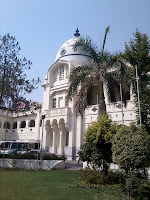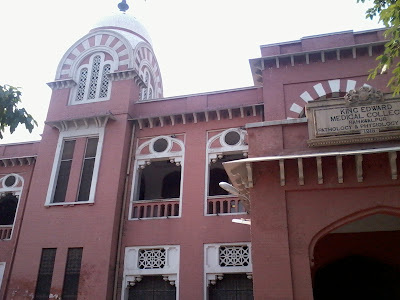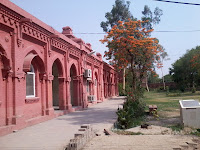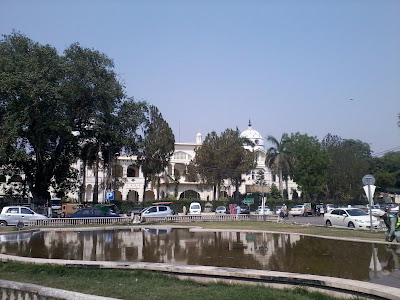King Edward Medical College: Here’s a little history. It was constructed in 1860 has a very long tradition of excellence going back to over 140 years. This is the second oldest seat of medical learning in the subcontinent, the first being in Calcutta. King Edward Medical College is even older than the University of the Punjab, the latter being established in 1870 as the Punjab University College. The university status was granted in 1882.
In August, 1860, Dr. J.B. Scriven of the General Hospital in Calcutta was invited to become the Principal of the proposed Lahore Medical School, which was to be the second such Institution in Indo Pakistan Sub-Continent. In keeping with the modest beginning, the newly created institution was designated as Lahore Medical School and started functioning in Artillery Barracks at the present site of the Government College, with a Hospital located in a foreign stable near the present Tibbi Police station in Taxali Gate, almost a mile away from the college. This arrangement according to Dr. Scriven was most inconvenient and insufficient for the needs of the community.
A total of 49 students were admitted (44 in Hindustani Classes and 5 in English Classes) following Matriculation examination in 1860. The only posts sanctioned by the Government in the beginning were those of the Principal, who started teaching Anatomy, Physiology; and a Professor (Dr. T.E. Burton Brown) who commenced his lectures on Chemistry, Materia Medica and Botany. The school soon gained in popularity which was evidenced by the steady increase in the member of students which rose to 40 by the year 1870 in English Classes and 87 in the Hindustani Classes. 27 students passed the native Doctor’s Examination in 1863 and one student by the name of John Andrews passed the Sub-assistant Surgeons examination in 1865.
Until 1870, the Medical School had been granting its own diplomas to Sub-assistant Surgeons and native doctors. With the opening of the Punjab University College that year, it was arranged so that the new College would undertake the conduct of examination and granting of University diplomas. The first such examination was held in October, 1871 by Diploma in Medicine. During the next 13 years the Punjab University College awarded diplomas to 145 successful students. It is matter of interest to note that the Medical College has a longer history than the University of the Punjab, and the relationship between the two has always been cordial and cooperative. The College was then as now independent in all affairs in teaching and administration except for conducting examinations.
In 1870, the construction of the attached teaching hospital was completed and was named after the then Viceroy of India, Lord Mayo (Mayo Hospital). The first building of the Medical School was built in the same style as the Mayo Hospital. It was completed in 1883. The next year, a nursing class was also started. Women students were allowed to register for regular courses in the same class as men for the first time. J.E. Hilton Executive Engineer, Lahore designed and constructed a new dissection room in 1887. In 1891, the Licentiate Diploma was re-designated as Bachelor of Medicine and Bachelor of Surgery (MBBS). A building housing the Post- mortem theatre and a small two room Pathology laboratory was built in 1895.
During 1910-1915, new buildings were constructed from King Edward Memorial Funds, and with the Sovereign’s permission named King Edward Medical College.
Credit: University of Alberta website.

Shiraz Hassan is a magazine reporter and feature writer for Sunday Magazine in Lahore, Pakistan, where he covers social issues, art and culture. At the magazine, he has published more than 400 features related to social problems, culture and ‘show biz.’ Shiraz has also worked as a news editor at the radio network “MAST FM 103” in Lahore.
He writes about culture and heritage of South Asia, particularly Pakistan. He advocates rich culture of this land and tries to explore facts. Recently he was given an award from the Federal Ministry of Population Welfare for his article on population crises. Writers Guild also awarded him a Medal of excellence for his work.













